The Red house by Phillip Webb
- Casa Collage
- Mar 20, 2022
- 4 min read
Updated: May 30, 2022
“The reason for Webb´s influence was that his buildings provided examples of inventive ways of using traditional building crafts”
Margaret Richardson in ´Architects of the Arts and Crafts Movement´. London, 1983
Carolina Lineros Ordúz
Josef Huber
History and Theory
Iconic Arts and Crafts home of William and Jane Morris and the centre of the Pre-Raphaelite circle.
Whitin the house the furnishings and decoration displayed and celebrated the manufacturing process and the skill of the craftsmen. The dining table at Red House is a good example of celebrating simple, utiltarian design, that instead of being covered with a tablecloth, was left and used in its uncovered state.

From the very first exploration of Arts and Crafts ideas the need to produce furnishing and household goods which were both practical and aesthetically pleasing took centre stage. In the words of the architect and designer Charles Robert Ashbee, ´The Arts and Crafts Movement began with the object of making useful things, of making them well and of making them beautiful; goodness and beauty were the leaders of the movement synonymous terms.
‘Dragon’s blood’ lacquered dresser designed by Philip Webb for the house and dated c.1860. ©National Trust Images/Nadia Mackenzie
Lawn Road Flats (Isokon) by Wells Coates
ISOKON was a company founded by Jack PRITCHARD and Wells COATES related closely to their Lawn Road building project. Its name is derived from ‘Isometric Unit Construction’, which is itself based on Coates's preference for drawing isometric views. In a company memo of March 1932, its aims were spelt out, calling for standardized units, use of new materials, movable interior walls and large, ribbon windows: in other words, it was an English restatement of the architectural aspirations of the MODERN MOVEMENT.

At the time, Pritchard had commissioned Coates to design the Lawn Road Flats in north London - a truly Corbusian set of ‘machines for living in’ - and Isokon was to be the building's controlling company. The foundation of Isokon also had much to do with Pritchard's nervousness regarding Coates's domination of its predecessor, Wells Coates and Partners. Partly to create furnishings for Lawn Road and partly to promote the use of PLYWOOD as a modern material, Isokon went on to commission and edit furniture by designers such as Egon Risse, Marcel BREUER and Walter GROPIUS, all of whom lived in the Lawn Road Flats at some time. The advent of World War II cut off the company's hitherto significant supply of furniture from Estonia and it ceased production. In the 1960s, when Pritchard retired, the production of Breuer's Long Chair and Gropius's nesting tables was undertaken by John Alan Designs.
Isokon furniture exploited the strength and lightness of bent plywood, and the Donkey is no exception. It was named the Donkey because of its organic, curvilinear shape with four legs and two 'panniers'. Books were stacked in the panniers while the space between them could be used for magazines and newspapers.
Penguin Donkey, bookcase, designed by Egon Riss, manufactured by Isokon Long Chair, designed by Marcel Breuer, manufactured by Isokon Furniture Compane. 1939 Isokon Furniture Company, 1936, UK.
Isokon Furniture Company, 1939, UK. Museum no. W.19:1 to 3-1993.
© Victoria and Albert Museum, London
It was the ever-enterprising Pritchard who appointed Gropius Controller of Design in his own Isokon Furniture Company, subsequently asking Breuer to work on “a new production of plywood furniture”. Breuer was already famous for his tubular steel furniture. This new material, plywood, allowed him greater flexibility. The Long Chair has a beautiful organic quality. A sales leaflet designed by Moholy-Nagy suggests that reclining in a Long Chair represented a modernist form of levitation.
2 Willow Road by Erno Goldfinger
The house was built by Hungarian architect Ernö Goldfinger both as family home and manifesto of his Modernist ideals. Goldfinger is famous for designing Trellick Tower in West London to solve the post-war housing crisis. Despite its nadir in the 1970s when Trellick became known as ‘the tower of terror’, it’s now something of a cultural icon, although Erno never lived to see its rehabilitation.

Interior, 2 Willow Road, Hampstead designed by Ernö Goldfinger, 1939, London UK. https://blog.history.ac.uk/2018/01/erno-goldfinger-and-a-visit-to-2-willow-road-hampstead/
The work of the Budapest-born architect Ernő Goldfinger (1902-1987), Willow Road was from the outset a controversial design. Goldfinger’s critics—mindful of his training with Le Corbusier—feared the imposition of an angular concrete block in a part of London celebrated more for its fine Georgian architecture and, with the Heath, proximity to largely untamed countryside.

Ernö Goldfinger´s studio and Detail of the pivoting drawers on the desk in the Studio at 2 Willow Road, Hampstead designed by Ernö Goldfinger, and remained in his office until he retired in 1977. https://www.ntprints.com/image/346761/detail-of-the-pivoting-drawers-on-the-desk-in-the-studio-at-2-willow-road
Close view of the fitted wooden shelves in the office on the 2nd floor of 2 Willow Road. The shelves were designed by Ernö Goldfinger for the Nursery. https://www.ntprints.com/image/347507/close-view-of-the-fitted-wooden-shelves-in-the-office-on-the-second-floor-of-2-willow-road
Large numbers of progressive artists, writers and thinkers moved from Chelsea to Hampstead in the 1930s. They were drawn to the relatively low cost of housing. Not surprisingly the number of artists living in the area spiked around the time 2 Willow Road was built by Erno and Ursula Goldfinger. The house is also filled with furniture designed by Goldfinger. The art collection includes a number of significant 20th-century works by Bridget Riley, Max Ernst and Henry Moore among others. The house design was intended to act as a counterpoint to nearby Georgian houses which Goldfinger admired. The interiors of 2 Willow Road are lined with oak finished with highly polished wax, and are full of meticulous, carefully designed details.




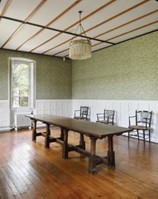

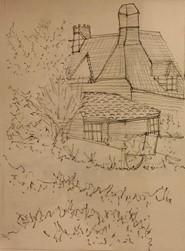

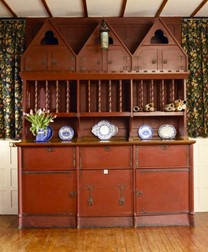
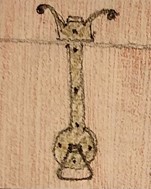
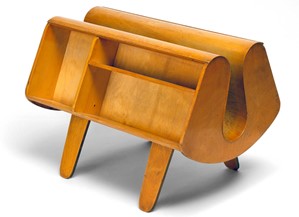
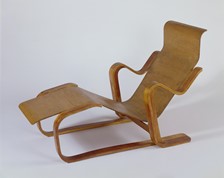
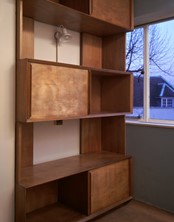
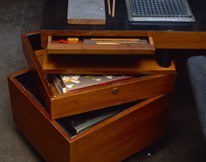

Comments